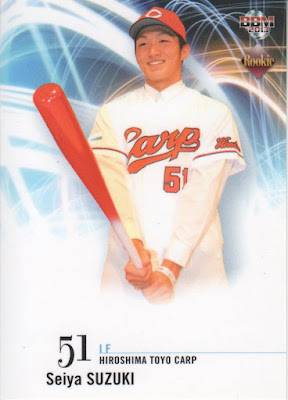The last time an NPB team changed its name was 10 years ago - the Yokohama Baystars were sold to DeNA after the 2011 season and changed their name to the Yokohama DeNA Baystars. This means that 2022 will be the eleventh consecutive year that NPB has operated with the current set of team names. That may not sound like much, but I believe it is the longest that NPB has ever gone without a team changing their names because they were sold, they merged with another team, they moved to a new location or just randomly decided to change their name. The previous longest stretch between name changes was the ten years between Fukuoka losing their team after the 1978 season (the Crown Lighter Lions were sold to Seibu and moved to Tokorozawa) and gaining a new team after the 1988 season (the Nankai Hawks were sold to Daiei and relocated from Osaka) - and also the Hankyu Braves getting sold to Orix.
Here's a list of the name changes in NPB since 1958 when the Daiei Stars and Mainichi Orions merged to become the Daimai Orions and stabilize the league at 12 teams:
1959 - the Kintetsu Pearls change their name to the Kintetsu Buffalo
1961 - the Osaka Tigers change their name to the Hanshin Tigers
1961 - the Kintetsu Buffalo change their name to the Kintetsu Buffaloes
1964 - the Daimai Orions change their name to the Tokyo Orions
1965 - the Kokutetsu Swallows are sold to Sankei and become the Sankei Swallows
1966 - the Sankei Swallows change their name to the Sankei Atoms
1968 - the Hiroshima Carp change their name to the Hiroshima Toyo Carp
1969 - the Tokyo Orions are sold to Lotte and become the Lotte Orions
1970 - the Sankei Atoms are sold to Yakult and become the Yakult Atoms
1973 - the Toei Flyers are sold to Nittaku and become the Nittaku Home Flyers
1973 - the owners of the Lions sell the naming rights to the team to Taiheiyo Club and the team is renamed the Taiheiyo Club Lions
1974 - the Nittaku Home Flyers are sold to Nippon-Ham and become the Nippon-Ham Fighters
1974 - the Yakult Atoms are renamed the Yakult Swallows
1977 - the owners of the Lions sell the naming rights to the team to Crown Gas and the team is renamed the Crown Lighter Lions
1978 - the Taiyo Whales move from Kawasaki to Yokohama and become the Yokohama Taiyo Whales
1979 - the owners of the Lions sell the team to Seibu and the team is moved to Tokorozawa to become the Seibu Lions
1989 - the Nankai Hawks are sold to Daiei and moved to Fukuoka to become the Fukuoka Daiei Hawks
1989 - the Hankyu Braves are sold to Orix and become the Orix Braves
1991 - the Orix Braves move to Kobe from Nishinomiya and become the Orix BlueWave
1992 - the Lotte Orions move to Chiba from Kawasaki and become the Chiba Lotte Marines
1993 - the Yokohama Taiyo Whales rename themselves the Yokohama Baystars
1997 - the Kintesu Buffaloes rename themselves the Osaka Kintetsu Buffaloes
2004 - the Nippon-Ham Fighters move from Tokyo to Sapporo and become the Hokkaido Nippon-Ham Fighters
2005 - the Fukuoka Daiei Hawks are sold to Softbank and become the Fukuoka Softbank Hawks
2005 - the Osaka Kintetsu Buffaloes and Orix BlueWave merge to become the Orix Buffaloes
2005 - the Tohoku Rakuten Golden Eagles are added as an expansion team to replace Kintetsu
2006 - the Yakult Swallows change their name to the Tokyo Yakult Swallows
2007 - the Seibu Lions change their name to the Saitama Seibu Lions
2012 - the Yokohama Baystars are sold to DeNA and become the Yokohama DeNA Baystars
Note that these are just team name changes which is why I don't mention the Lotte Orions moving from Tokyo to Sendai in 1972 and from Sendai to Kawasaki in 1978 since the team's name remained the same the whole time.
In honor of it being 10 years since the debut of the Yokohama DeNA Baystars, here's a couple cards from the spring of 2012 featuring the then-current and future managers of the team:
 |
| 2012 BBM 1st Version #298 |
 |
| 2012 Calbee #070 |

















































